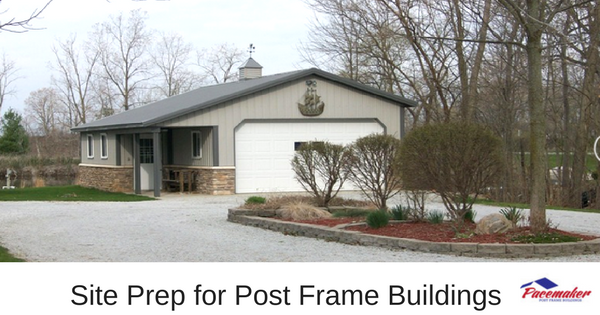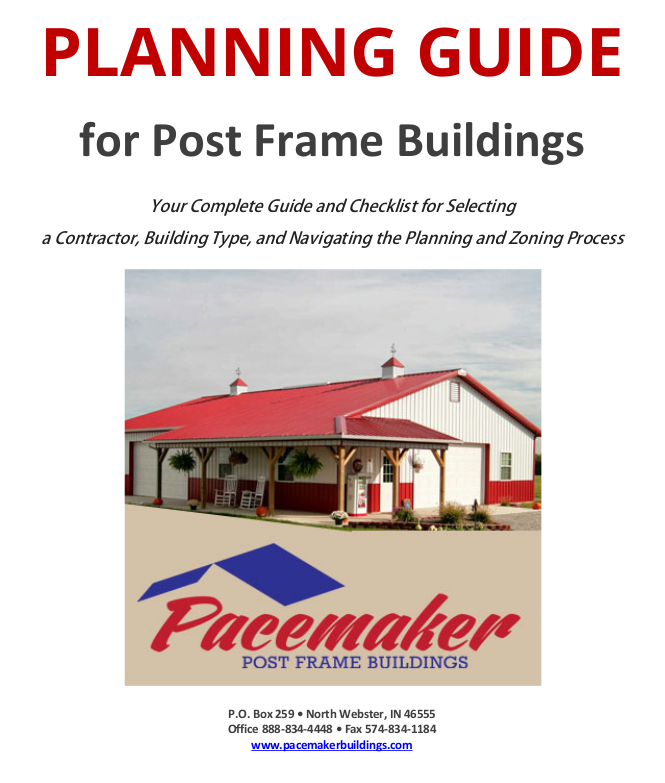 Before you can look up to admire the beauty and sensibility of your post frame building, it is necessary for you first to consider what lies beneath it. Site selection and proper site preparations are critical elements to ensuring a safe and long-lasting post frame building.
Before you can look up to admire the beauty and sensibility of your post frame building, it is necessary for you first to consider what lies beneath it. Site selection and proper site preparations are critical elements to ensuring a safe and long-lasting post frame building.
As with any construction method, improper site preparation can result in an unstable structure with bad drainage, weather vulnerability, or other problems.
Site Selection for Your Post Frame Building
Determining the right location and orientation of your completed building is the first step. Consider all regulatory issues including codes, setbacks, and permits to avoid legal problems later. And, you must take a long-term view of the positioning of the building with respect to vehicle access, prevailing wind direction, and the possibility for future expansion to save many headaches later.
After studying your available options, determine the right location of the building relative to other structures and how the new building might affect your normal operations. Think about how to position the building best to withstand the worst possible wind and weather conditions. Perhaps you might wish to set the structure in a location that leaves room to add a new extension later.
Considerations for Site Preparation
Once you have decided where you want the building, the two most important factors to consider are:
- Is the site level?
- Will the drainage be sufficient?
These considerations are, in fact, related. Creating a level area for the structure is a normal first step in any construction. The grade work can be accomplished with a skid steer or larger, removing all vegetation and sloping the grade down and away from the area beneath the future building. This allows water to flow away from the building and never pool in or beneath the structural members. The building will last far longer if the drainage is properly designed.
Checking the Soils Beneath
Clay or silt soils beneath and around the footprint of the building cause water to accumulate. Check the type of soil beneath your planned building and remove those soil types and replace them with a better draining topsoil and a layer of coarse stone. The topsoil should be compacted to a minimum 90% modified Procter density.
If soils types are not your expertise, contact a soil engineer to give an assessment of what you should do and to double-check your drainage design.
Flood Plain Considerations
If the property rests within a designated flood plain area, you must consider raising the base of the structure to an elevation that would prevent the foundation from becoming flooded during a high water year. This will mean bringing in topsoil and coarse stone to elevate the building. A surveyor can determine the exact height required to minimize the risk of flooding the structure.
Setting the Posts
Once the ground is prepared and the levels are sloped properly to prevent moisture accumulation, the posts can be set into the ground to create the support for the entire structure. The base of the posts should extend at least below the frost line or the level at which the ground can freeze. Naturally, this level is dependent upon the location. If the posts are not sunk deep enough, cold conditions can cause frost “heaves” that will diminish the structural integrity of the building.
The base of the posts should extend at least below the frost line or the level at which the ground can freeze. Naturally, this level is dependent upon the location. If the posts are not sunk deep enough, cold conditions can cause frost “heaves” that will diminish the structural integrity of the building.
Most who have constructed post frame buildings have used 4-feet as a standard post depth. However, in some areas like North Dakota, Minnesota, and much of Canada, the frost line may exceed 48”. In these cases, it is a good idea to sink the posts another foot or two deeper.
Anchoring the posts in concrete at a depth of four to six feet ensures the structure will not be affected by extremely cold weather and sufficiently anchors the building during the most severe wind storms.
